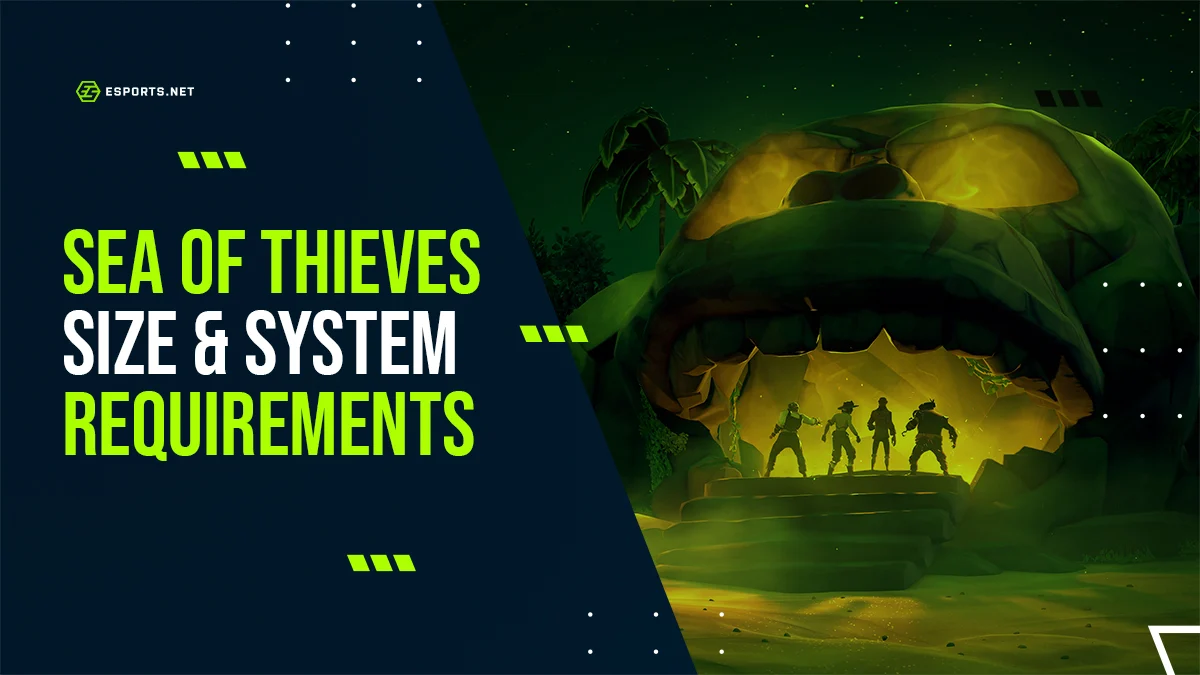If you’re planning to set sail in Sea of Thieves, one of the first things you’ll want to know is how much space this pirate adventure is going to take up on your system. Whether you’re prepping your PC or console, Sea of Thieves size isn’t exactly light as a feather, but it’s not a massive storage hog compared to some modern AAA titles either.
Let’s break it down.

Sea of Thieves Download Size
As of the latest updates, the Sea of Thieves download size comes in at around 80 GB. However, depending on the platform and updates installed, this could fluctuate slightly. Keep in mind, the game has seen regular content updates from Rare, meaning that the Sea of Thieves game size might get bulky, so storage needs can crank up over time.
Once fully installed with all the latest updates, you’re looking at approximately 100 GB of Sea of Thieves file size on your PC. Xbox Series X|S and Xbox One players will see similar numbers, but expect a range between 90 GB and 100 GB, depending on optimization and additional content, like patches or seasonal events. Which is not that bad, considering the size of other modern games, like Baldur’s Gate 3 size.
If you’re managing a tight SSD, it might be time to clear out some old titles or screenshots from that one game you haven’t played in months (we all have one, don’t worry).

(Source: Steam/Rare)
Sea of Thieves System Requirements
Alright, now that you’ve got a handle on the storage situation, let’s talk hardware. The developers have done a solid job making sure it can run on a wide variety of rigs, and the majority of the Sea of Thieves player count can confirm that it’s well optimized. But whether you want to sail the seas at 30 FPS or crank everything to Ultra and catch every single detail on the horizon, here’s what you need:
Sea of Thieves Minimum Requirements:
- OS: Windows 10 (64-bit)
- CPU: Intel Q9450 @ 2.6GHz / AMD Phenom II X6 @ 3.3GHz
- RAM: 4 GB
- GPU: Nvidia GeForce GTX 650 / AMD Radeon 7750 / Intel A310
- DirectX: Version 11
- Storage: 100 GB available space
With these minimum specs, you’ll be able to get your pirate on at 720p with settings on the lower side. It’s enough for casual voyages, but might leave you missing some of the better details out on the ocean.
SoT Recommended Requirements:
- OS: Windows 10/11 (64-bit)
- CPU: Intel i7 4790 @ 4GHz or AMD Ryzen 5 1600 @ 3.6GHz
- RAM: 16 GB
- GPU: Nvidia GeForce GTX 1080Ti / AMD Rx Vega 64 / Intel A750
- DirectX: Version 12
- Storage: 100 GB available space
Hit these recommended specs, and you’re looking at smooth sailing in full HD with richer textures, better lighting, and much smoother frame rates. Of course, if you’re sporting a newer RTX card or a recent-gen AMD GPU, you can expect even better performance (plus those sweet reflections on the waves). Either way, check out our best Sea of Thieves settings tip if you can’t find your sweet spot.

(Source: Steam/Rare)
Should You Dive Into Sea of Thieves in 2025?
So, with all the technical stuff out of the way, you might be wondering – is Sea of Thieves dead? – not at all. Is it still worth your time in 2025? Absolutely. The game has evolved massively since its launch, with Rare continuously adding new content, world events, and customization options.
The player base is alive and kicking, thanks in part to Sea of Thieves cross-play between Xbox and PC. Whether you’re rolling solo or assembling a crew with your friends, there’s always something to do – be it hunting down buried treasure, fighting off ghost ships, or just causing chaos in the open seas.
And with the Sea of Thieves size and system requirements being pretty forgiving, even mid-range setups can handle the adventure without breaking a sweat. Just make sure you’ve got the space on your drive, grab a grog (or coffee), and prepare to live the pirate’s life.
So, ready to hoist the anchor?




Leave a Reply